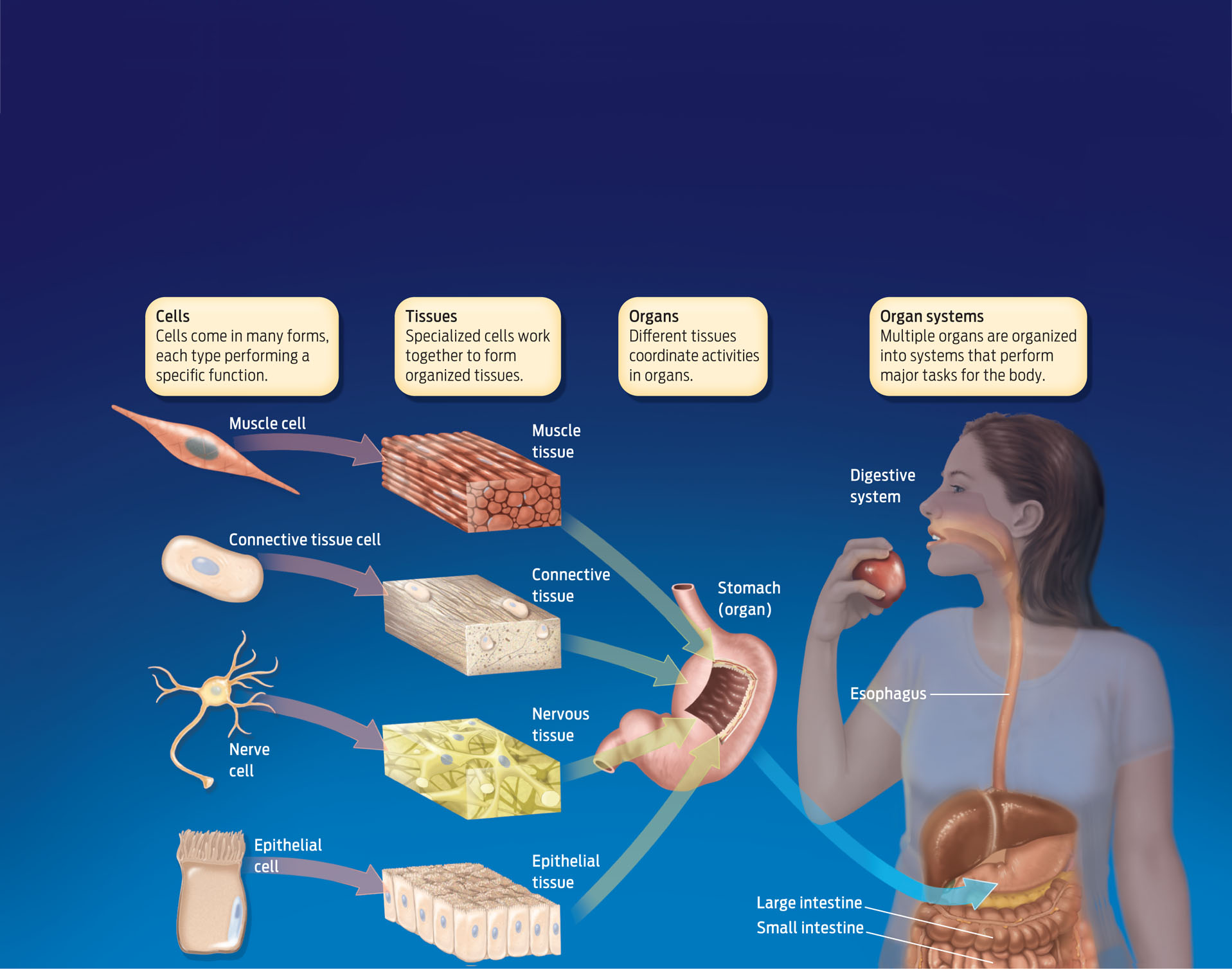THE BODY AS MACHINE
ANATOMY The study of the physical structures that make up an organism.
TISSUE An organized collection of a single cell type working to carry out a specific function.
Like a car or a computer, a human body is made up of many parts working together in a coordinated fashion. The parts are organized hierarchically, so that smaller components are organized into increasingly larger units, which are themselves organized into more complex systems. The study of all this intricate hardware is called anatomy.
ORGAN A structure made up of different tissue types working together to carry out a common function.
The product of millions of years of evolution, human bodies have an anatomical structure that is impressively well adapted to living in certain environments and performing certain functions. Our species evolved in the hot, flat savannahs of Africa where environmental conditions favored big brains, opposable thumbs, and bipedal posture—as well as the ability to keep cool (see Chapter 20). As a result, modern humans excel at grasping a pencil or looking through a microscope; we do less well swimming at the bottom of the ocean or living on mountaintops. Fundamentally, that’s because of the way we’re put together.
ORGAN SYSTEM A set of cooperating organs within the body.
For all living things, the smallest anatomical unit is the cell. Human bodies are made up of trillions of cells, each of which can be classified as one of a few hundred different types. Cells, in turn, are organized into tissues—integrated groups of specialized cells, often organized by surrounding proteins, working together to execute a particular function. Humans and other animals have four different types of tissue—epithelial, connective, muscle, and nervous—which carry out specific tasks in the organs of which they are a part. The stomach, for example, is an organ composed of the four types of tissue organized into a compartment for churning and digesting food. At the highest level of organization, organs interact chemically and physically as part of organ systems. For instance, the stomach works with the esophagus, small intestine, and liver to digest and absorb food as part of the digestive system (INFOGRAPHIC 25.1).

PHYSIOLOGY The study of the way a living organism’s physical parts function.
HOMEOSTASIS The maintenance of a relatively stable internal environment even when the external environment changes.
549
If the body is like a machine, then physiologists—the scientists who study physiology—are interested in how this machine keeps running smoothly. Physiologists want to understand how organ systems cooperate to accomplish basic tasks, such as obtaining energy from food, taking in nutrients to build new molecules during growth and repair, and ridding the body of wastes—in short, how the body functions. To the physiologist, the body is an integrated system for processing inputs and outputs and maintaining homeostasis—a relatively stable internal environment even when the external environment changes.
550